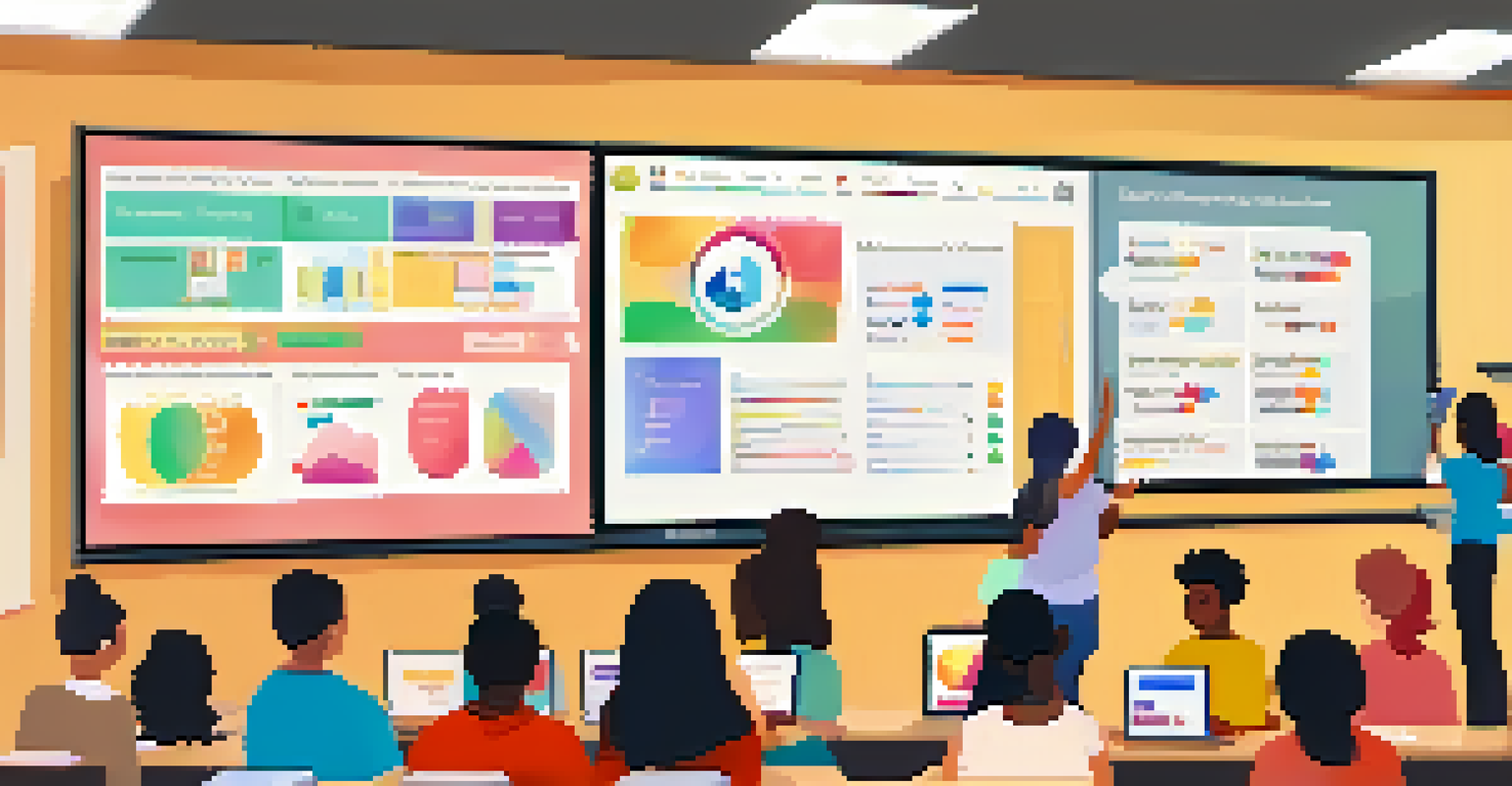The Impact of Digital Assessment on Teacher Workload

What is Digital Assessment and Its Growing Importance?
Digital assessment refers to the use of technology to evaluate student learning, often through online platforms and tools. This approach has gained momentum in recent years, especially with the rise of remote learning. Educators recognize that digital assessments offer a more flexible and engaging way to gauge student understanding.
Technology will not replace teachers, but teachers who use technology will replace those who do not.
As classrooms evolve, the traditional methods of testing are being supplemented or replaced by digital options. This shift not only aligns with the tech-savvy nature of today's students but also helps in streamlining the assessment process. By integrating technology, educators can generate immediate feedback, which is crucial for both teaching and learning.
Moreover, the importance of digital assessment extends beyond mere convenience; it also enhances the quality of education. With real-time data, teachers can tailor their instruction to meet the diverse needs of their students, making learning more effective and personalized.
How Digital Assessments Reduce Administrative Burden
One of the most significant impacts of digital assessments is the reduction in administrative tasks for teachers. Traditionally, grading paper tests can be time-consuming and tedious, often taking hours or even days. Digital platforms often automate grading, allowing teachers to focus more on instruction rather than paperwork.

This efficiency doesn't just save time; it also minimizes the likelihood of human error in grading. When assessments are graded automatically, teachers can trust the results, which frees them to concentrate on analyzing student performance and adjusting their teaching methods accordingly. This shift can create a more positive and productive teaching environment.
Digital Assessments Boost Learning
Digital assessments enhance educational quality by providing real-time feedback and personalized learning opportunities for students.
Additionally, with built-in analytics features, educators can quickly access data to identify trends and areas for improvement. This quick access to information makes it easier for teachers to adapt their strategies and support student learning effectively.
Enhancing Student Engagement Through Interactive Assessments
Digital assessments often incorporate interactive elements that can boost student engagement significantly. For instance, quizzes can feature multimedia elements such as videos or simulations, making the learning experience more enjoyable. Engaged students are more likely to perform well, as they find the assessments relevant and stimulating.
The future of education is not about technology, it’s about how we use technology to create a more personalized learning experience.
Furthermore, technology allows for a variety of assessment formats, from gamified quizzes to collaborative projects. This diversity not only keeps students interested but also accommodates different learning styles. For example, visual learners might thrive with interactive graphics, while auditory learners can benefit from audio prompts.
By fostering a more engaging assessment environment, teachers can help students develop a positive attitude toward learning. This shift can lead to improved motivation and better academic outcomes, ultimately lightening the teacher's workload through more effective learning.
Facilitating Timely Feedback and Student Support
Timely feedback is crucial for student success, and digital assessments excel in this area. With instant scoring and feedback mechanisms, students can see where they stand immediately after completing an assessment. This immediate response helps them identify their strengths and weaknesses, fostering a growth mindset.
Teachers can also use the data from digital assessments to provide personalized support to students. For example, if a student struggles with a particular concept, the teacher can recommend targeted resources or interventions. This proactive approach leads to a deeper understanding of the material and can prevent students from falling behind.
Reducing Teacher Workload Effortlessly
By automating grading and streamlining administrative tasks, digital assessments free up teachers to focus more on effective instruction.
Ultimately, timely feedback not only benefits students but also alleviates teacher workload. By addressing issues early on and guiding students effectively, teachers can spend less time on remediation and focus more on enriching the learning experience.
Streamlining Communication Between Teachers and Parents
Digital assessment tools often include features that facilitate communication between teachers and parents. Through online portals, parents can access their child's performance data, fostering a collaborative approach to education. This transparency helps parents stay informed and engaged in their child's learning journey.
Moreover, timely updates about assessments and progress can help parents support their children more effectively at home. When parents are well-informed, they can reinforce learning outside of school and address any concerns proactively. This partnership can create a more supportive learning environment for students.
By streamlining communication, teachers can save time that would otherwise be spent on individual updates. Instead, they can focus on providing quality instruction and building relationships with their students, further enhancing the educational experience.
Addressing Concerns About Technology and Accessibility
While digital assessments offer many benefits, concerns about technology and accessibility must be addressed. Not all students have equal access to devices or reliable internet connections, which can create disparities in assessment outcomes. Schools need to ensure that all students can participate fully in digital assessments.
To mitigate these challenges, educators can adopt hybrid assessment strategies that combine digital and traditional methods. For instance, offering paper-based tests alongside online options can cater to diverse student needs and access levels. This flexibility ensures that all students have opportunities to succeed.
Engaging Students with Interactivity
Interactive digital assessments increase student engagement through diverse formats, making learning more enjoyable and effective.
Additionally, training for both teachers and students is essential. Familiarizing everyone with the technology will alleviate anxiety and enhance the overall effectiveness of digital assessments. Investing in professional development helps teachers utilize these tools effectively while empowering students to navigate digital platforms confidently.
The Future of Teacher Workload with Digital Assessment
Looking ahead, the future of teacher workload is likely to continue evolving alongside technology. As educators become more adept at using digital assessments, they may find innovative ways to enhance their teaching practices. This evolution will not only streamline their workload but also enrich the learning experience for students.
Furthermore, advancements in artificial intelligence and machine learning could lead to even more personalized assessments. Imagine assessments that adapt in real-time to match a student's learning pace and style, providing a truly customized experience. This level of personalization could greatly reduce the need for extensive grading and feedback.

Ultimately, the integration of digital assessments presents an opportunity to reshape education positively. By embracing these changes, teachers can foster a more engaging and supportive learning environment while effectively managing their workload.